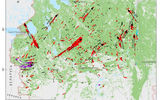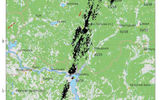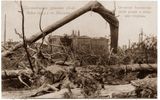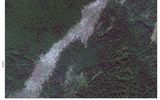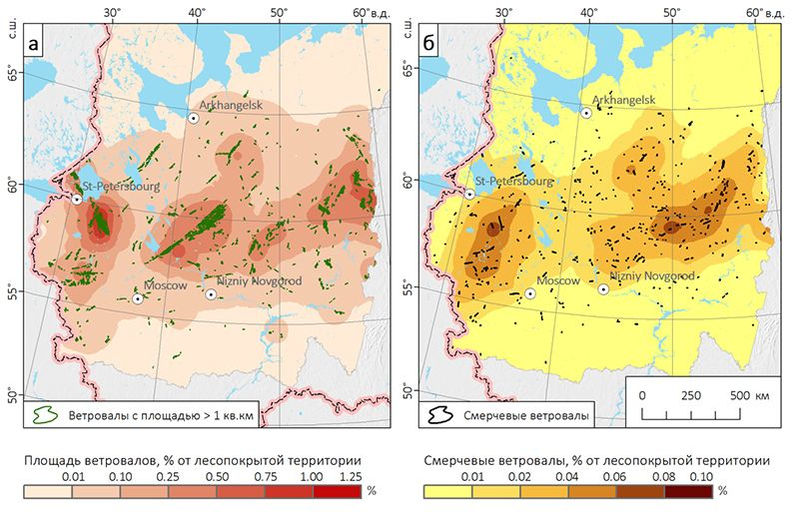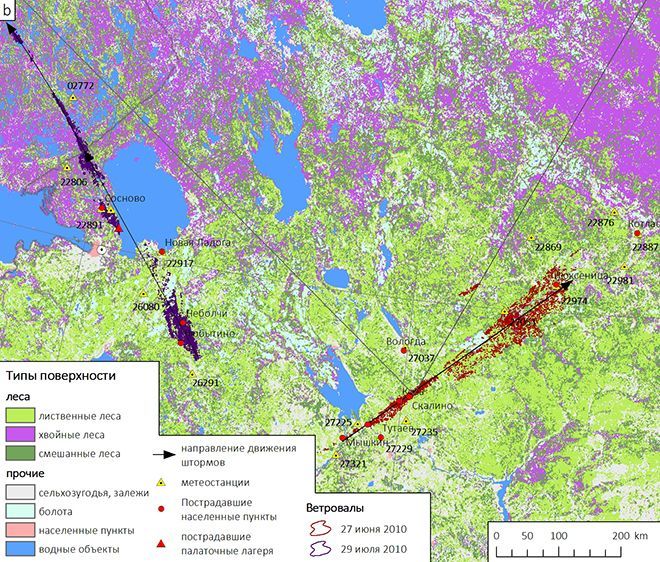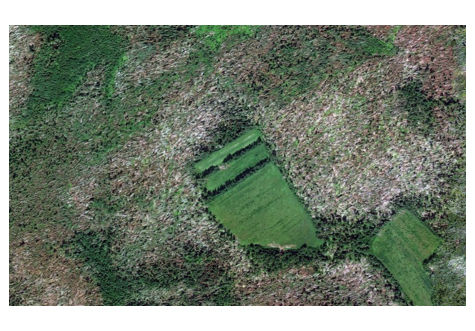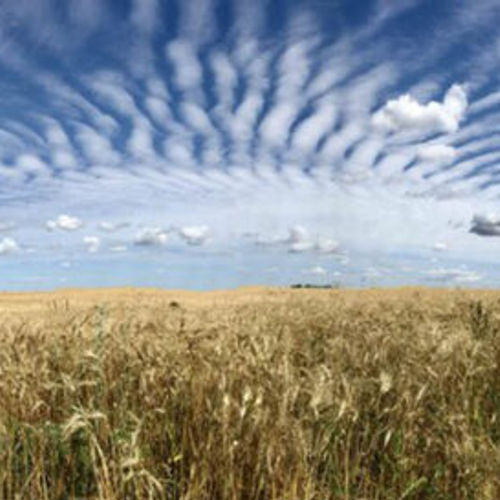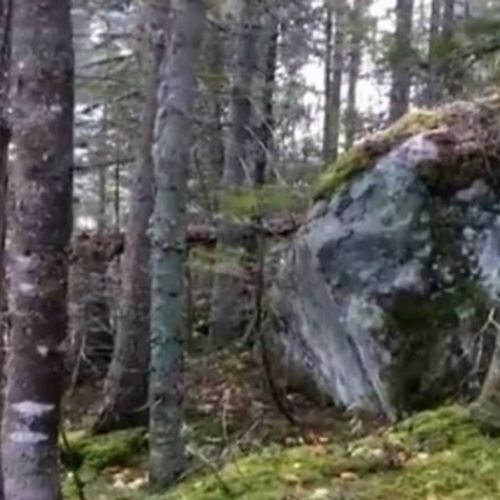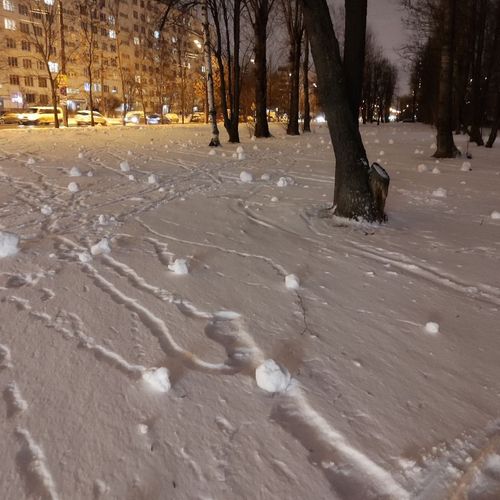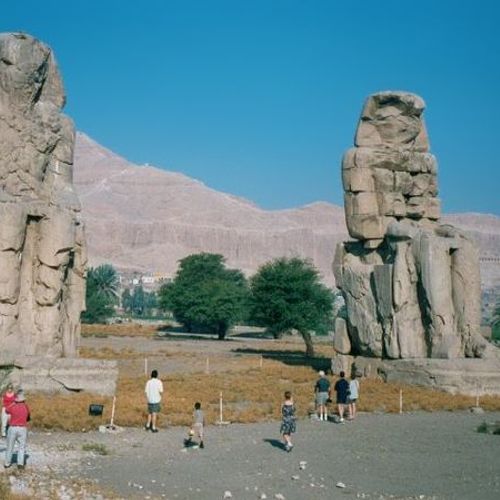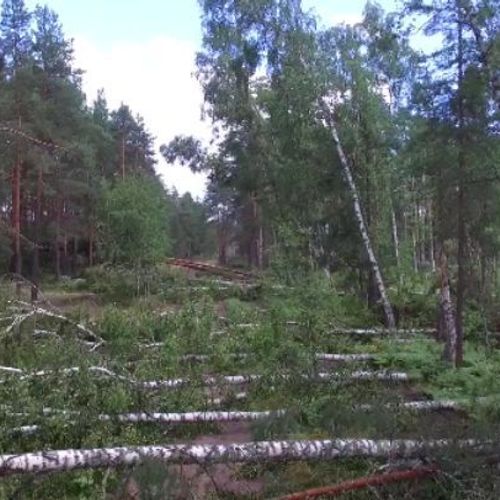
| Added | Sun, 26/12/2021 |
| Источники | |
| Дата публикации | Sun, 26/12/2021
|
| Версии |
Hurricane-force winds kill people, destroy buildings, overturn cars, and break power transmission poles. And he also fells trees. Studying such forest ruins, you can get a lot of information about the meteorological phenomena that arranged them — and even many years later. By the scars that the wind leaves on the body of the forest, you can understand whether it was a squall or a tornado, where it was going, what it was. Alexander Chernokulsky from the Institute of Atmospheric Physics of the Russian Academy of Sciences and Andrey Shikhov from Perm University tell about Russian wind turbines and what can be said about hurricane winds of the past.
This December, a strong tornado swept through four American states. This is very unusual for December, strong tornadoes (as tornadoes are usually called in Russia) are very rare in the winter season. Russia is familiar with tornadoes firsthand, which is regularly carried over its lands, as a rule, from May to September. At the same time, squalls are most often observed — sharp wind increases, usually short-lived.
Especially strong squalls and tornadoes can lead to catastrophic windstorms (they are also called continuous or massive), destroying almost the entire stand. In addition, such wind turbines help to spread forest pests (for example, bark beetles) and increase the risk of forest fires. On the other hand, wind turbines also contribute to the natural renewal of forest ecosystems, increasing their sustainability. However, this rather refers to endemic windfalls - regular dislocations or breaks of individual trees under the influence of non-extreme winds.
How it blows away trees
In the literature, in addition to the word "windy", you can also find the term windbreak, which refers to areas of the forest where trees are broken under the influence of the wind, and not uprooted. Recently, satellite images have been used to study wind tunnels, in which it is impossible to distinguish windbreak from windbreak. Therefore, we will use them as full synonyms for simplicity.
In general, the resistance of trees to the effects of wind depends on a variety of factors:
- meteorological, which includes not only the wind speed, but also, for example, additional load on the crown of the tree in the form of heavy rain, sleet or ice;
- the properties of the trees themselves — their breed, age, crown shape, root system;
- locations — slope steepness and exposure, soil moisture, soil profile power.
All these factors are taken into account by modern mathematical models for calculating the probability of wind under given meteorological conditions for given tree species in a certain area.
Whether the wind breaks the tree or uproots it depends primarily on the shape of the crown, the type of root system of the tree and the properties of the soil. Pine trees, for example, will be broken by the wind more often, and firs and firs will be torn out. The probability of breaking a tree also depends on the strength of the wood. So, in the USA, when assessing the intensity of tornadoes, tree species are divided into two groups: with solid wood (oak, maple, birch, ash) and with soft wood (pine, spruce, fir, cedar, cypress).
The properties of the soil also affect. Trees growing on waterlogged or low-power mountain soils are most susceptible to falling out. Even a moderate-speed wind can knock down trees in such places. Trees growing on the edges of cuttings are also more sensitive to the wind. Urban trees cannot be called wind-resistant either — as a rule, their root system is poorly developed.
Continuous windfalls in the forests leave behind winds whose speed is close to hurricane values. If they are accompanied by heavy sleet or ice, then a lower wind speed will suffice. For example, in Switzerland, most large continuous windstorms occurred at wind speeds of 35 meters per second and above. A sign of the highest wind speeds characteristic of strong tornadoes (category F3 and higher on the Fujita scale, wind speed greater than 70 meters per second) are such damages as bark torn from trees. But they can be installed only from photographs from the site or during a real survey on the ground.
The biggest windfalls are associated with cyclones. For example, Hurricane Katrina in August 2005 destroyed or damaged more than two million hectares of forest in the United States. Sometimes similar tropical cyclones reach Russia: typhoon Lionrock on August 31, 2016 damaged more than 26 thousand hectares of forests in the Primorsky Territory, including in the Sikhote-Alin Nature Reserve.
In Western and Central Europe, catastrophic windstorms are the offspring of North Atlantic cyclones. They appear mainly in autumn and winter, when the wind speed in swirls over the Atlantic reaches hurricane values. The forests suffered the most from them at the very end of 1999: the December cyclones "Lothar" and "Martin" destroyed more than 200 million cubic meters of stand, which is several times more than the annual rate of losses from windfalls. Not only the extreme strength of the storms affected, but also the aging of European forests: the older the trees, the less resistant they are to the effects of wind.
Atlantic cyclones, moving deep into Europe, quickly lose their strength. Then the convective phenomena of the warm period come to the fore — squalls and tornadoes. So, in the west of Poland on August 11, 2017, a destructive long-lived squall with wind gusts up to 42 meters per second damaged more than 78 thousand hectares of forest.
In Europe, windstorms destroy more forests than forest fires: they account for 53 percent of all losses from natural factors. Therefore, much attention is paid to their research here. For example, Sweden and Switzerland have been scrupulously collecting windfall data on their territory for more than a century, and the pan-European chain of observations became continuous in the 50s.
Our windfall
As for Russia, the scale of wind turbines, even only in the European part, not to mention the country as a whole, was known only very approximately until recently. The attention of researchers was mainly attracted by individual catastrophic events, such as a windstorm in the Visimsky Reserve in the Middle Urals on June 6, 1995, or the destruction of a stand from a destructive squall in the Leningrad and Novgorod regions on July 29, 2010. The impact of windstorms on forest ecosystems is studied in nature reserves — for example, in the Central Forest Reserve, where large windstorms have occurred three times in 30 years: in 1987, 1996 and 2017. In the Urals, Visimsky (Sverdlovsk region) and Vishersky nature reserves (Perm Krai) have data on windfalls caused by the combined effects of wind and snow - they occurred, respectively, in 1995 and 2015. However, there were no systematic studies of wind damage in Russia until recently.
This finally changed after long-term Landsat satellite observations became publicly available and it became possible to obtain data on forest losses from wind turbines over the past 35 years throughout the European territory of Russia.
The total area of forests completely destroyed by windstorms in European Russia is 313 thousand hectares. This is 0.21 percent of the total forested land in this region.
Is it a lot or a little? If we compare it with deforestation, it is literally a drop in the ocean: 90 percent of forest losses in 1985-2012 were the work of woodcutters. And if we compare the damage from the wind with the damage from fires (which everyone has heard) over the past 20 years, it is 3.5 times less - and this is taking into account the disastrous summer of 2010. And in a number of regions, windfalls turned out to be the main natural factor of damage to forest cover: for example, in the Novgorod region, more than one percent of the forest has been blown down by the wind over the past 35 years.
Most of all, our forests were damaged by several strong convective storms with squalls with wind speeds of over 30 meters per second, which left behind bands of continuous windbreak stretching several hundred kilometers. In the USA, such events are called by the Spanish word "derecho" (which means "straight"). And if they are not uncommon in the United States, they are well described in Europe, then in Russia they have literally just been discovered. According to our data, the two largest wind farms are connected with derecho: they date from June 27 and July 29, 2010, their total area is more than a third of the area of all wind farms in the European territory of Russia for 35 years.
So the summer of 2010 can rightfully be considered a climatic stress test for our country: then, it turns out, the weather was not limited to record heat and powerful fires alone. During the destruction of two blocking anticyclones, derechos formed on their western periphery, living for more than 8 hours each. The June storm damaged the forests and settlements of the Yaroslavl, Kostroma, Vologda and Arkhangelsk regions, and the July storm swept through the Novgorod and Leningrad regions, Karelia, and then crossed the border and continued to cut down the forest already in Finland. Dozens of people were killed and injured. The wind "licked" almost 50 thousand square kilometers — this is slightly more than the Moscow region — and felled 125 thousand hectares of forest. The geometry of the wind is impressive: the length of the scar that the derecho left on the body of the forest is more than 600 kilometers, and the width between the extreme points in some places reaches 70 kilometers. Age-related coniferous trees suffered the most then — they are generally more vulnerable to wind.
But such destructive and extensive squalls are very rare. But windfalls with an area of 5 to 20 thousand hectares occur every 5-10 years. The last one happened quite recently, on May 15, 2021. And, by the way, also on the western periphery of the blocking anticyclone. Perhaps this is not accidental: meteorologists are now actively studying the relationship between blocking anticyclones and increased activity of convective storms.
Tornado or squall?
Tornadoes on the European territory of Russia bring down trees at least as often as strong squalls. For example, at the beginning of the XX century, a tornado completely destroyed the famous Annengofsky grove in Lefortovo.
I saw its beginning and end: the sky turned yellow, bronze clouds flew, fine rain was replaced by large hail, the clouds turned black, they touched the bell towers. The darkness that followed was immediately replaced by an ominous yellow color. A storm broke, and it became cold. A black cloud descended over Sokolniki — it grew from below, and another one descended from above it. Suddenly everything spun... yellow lights flashed among the zigzags of lightning, and a crimson-yellow pillar of fire spun in the middle. A minute later, this horror deafeningly rushed by, destroying everything in its path. Roofs, boards, bells rang; crosses and domes were torn down, trees were uprooted; the huge Annengof grove was shaved off; century-old trees were either split or uprooted. The huge building of the Cadet Corps and the Paramedic School was destroyed. Through the streets — mountains of torn iron roofs, rolled up into a tube like paper. There are corpses in some places. Many dead and wounded…
- V. A. Gilyarovsky, "Russian Word"
On high-resolution satellite images, it is easy enough to distinguish the traces of a tornado on the body of the forest from the mark left by a squall. In the first case, the rotation of fallen trees to the left in relation to the path of the tornado is clearly visible — this indicates a cyclonic rotation of the vortex counterclockwise (tornadoes twisted in the other direction are extremely rare in Russia). And squalls simply stack trees in the direction of their movement.
Windfalls caused by tornadoes are easier to find on satellite images: they have a characteristic linear shape, and damage to the stand is a solid line with clear boundaries. We have already found more than 500 such traces over the past 20 years, but their total area on the territory of European Russia is only 13 percent of the total area of wind tunnels. Tornadoes are more local than strong squalls, and therefore the area of windfalls even from the strongest and longest-lived tornadoes does not exceed 1-3 thousand hectares. So, the famous Ivanovo tornado on July 9, 1984, in addition to human casualties and destroyed houses, left a trail in the forest that stretches 81.5 kilometers and occupies a total of 971 hectares, and in general that day the entire outbreak of tornadoes (there were at least eight of them) felled 3.8 thousand hectares of forest. Note that the wind turbines of 2010 are an order of magnitude (!) larger.
The area of wind tunnels can serve as a good indicator of the intensity of a tornado: in general, the weaker it is, the less wind leaves behind, and vice versa. Satellite images show that tornadoes have appeared in Russia more than once recently, the traces of which are similar to the winds from the Ivanovo tornado - up to 80 kilometers long and up to two kilometers wide. These tracks date back to 1993, 2008, 2012 and 2013 - and they did not gain such fame, because they passed over sparsely populated territories. There are large tornado winds beyond the Urals: for example, in August 2001, in the Tomsk region, a tornado passed through the forest for about 70 kilometers and dumped about 3,400 hectares of forest.
Satellite images have allowed us to take a fresh look at the climatology of tornadoes in Russia. For example, it helped to understand that tornadoes happen even in the Arctic: they passed near the Arctic Circle several times and left behind very impressive windfalls. The northernmost of them passed through Central Siberia, near the 67th parallel of northern latitude.
Новости со схожими версиями
Log in or register to post comments

